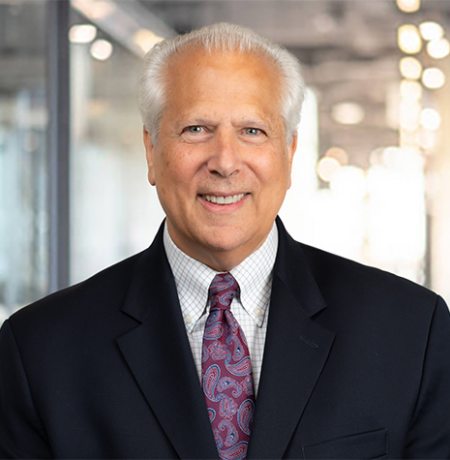
For the past several months, we have been exploring the strategic options available to a midsized, regional private university that is encountering some financial challenges. Our December post introduced a framework for assessing the institution’s strengths and weakness, and our January and February posts looked, first, at the university’s options for independent growth, and then at potential partnerships that could help reduce expenses through sharing the costs of academic programs, students services, and administrative units, or provide support for deferred capital projects.
As it proceeded through its evaluation and decision-making process, leadership has identified some promising partnerships. These include a partnership with community colleges to create transfer pathways into degree programs within the university’s college of liberal arts, and a partnership with the city to seek a third-party developer interested in building and operating a new athletic facility that also could host sports competitions, concerts, and other events. A potential consortium with two liberal arts colleges to combine low-enrollment academic programs and seek savings in administrative back-office functions did not progress, however, nor did efforts to find a merger partner for the university’s law school, which is under-enrolled and has operated at a significant negative operating margin for the past several years. The state university, which was not interested in a merger with its own law school, has expressed interest in acquiring the university’s law school building and related assets, including a parking structure, to use for other programs. Proceeds from this transaction could support the technology investments needed to launch the university’s online growth strategy.
Weighing the choices
With the need for further cost savings to ensure the university’s long-term financial viability, leadership turns to difficult decisions about which programs to cut. These decisions weigh such factors as enrollment trends, academic outcomes, and financial performance of the programs in question against considerations of what impact the loss of these programs would have on the university’s mission, reputation, student outcome success, and alumni support.
Leadership’s decision to initiate the process of closing the law school is relatively straightforward. The law school has its own campus and there is little interaction between its faculty and the faculty in the college of liberal arts and business school. It has some alumni support, but the law school alumni comprise a relatively small percentage of the university’s overall alumni population. The law school’s negative operating margin has been a consistent and increasing drag on the university’s overall financial position.
Leadership confronts more complex and difficult decisions as it considers underperforming programs within the college of liberal arts. There are certain humanities majors—including English, history, and philosophy—that faculty consider central to the liberal arts mission of the university and, in many cases, essential for students’ general education options. Although enrollment across all humanities majors is down, these programs have traditionally had the highest enrollments. The dean of the college also wants to make these programs a focus of degree program pathways in partnership with area community colleges to see if enrollments can be stabilized or enhanced.
Other programs being evaluated are considered less central to the university’s mission:
- Certain foreign language departments—including German, Italian, and Japanese—have fewer than 15 students as majors. Enrollments are stronger in Mandarin, Spanish, and French, but leadership finds it difficult to justify separate department structures for each. It decides to combine programs into a single modern languages department and eliminate the German, Italian, and Japanese majors.
- Few students are majoring in Latin and ancient Greek, although several of the Classics department’s courses on Greek and Roman mythology and classical civilization remain popular. Leadership decides to eliminate the Latin and Greek majors and terminate the department’s three non-tenured faculty but retain a minor in classical civilization, administered through the philosophy department.
- Religious studies has fewer than a dozen student majors. The department dates back to when the university had a religious affiliation; it has been a secular institution since the 1970s. Leadership decides to eliminate the department.
Winding down programs
The faculty handbook outlines the process for terminating an academic program. The administration submits a proposal to the faculty council, which then forms a review committee to prepare a report and recommendations for the council. If the faculty council votes to accept the administration’s proposal, it then forms a termination committee to determine which faculty members from the affected program or school will be terminated. Tenured faculty are entitled to a pre-determined period for notice of a program closure, or a pre-set severance payment based on their contract salary and benefits in the event of an immediate closure. Chairs of the closed departments will go back to full-time teaching and will be asked to teach more general education courses than they had in the past.
Leadership determines that its proposal is more likely to gain faculty acceptance if it can demonstrate that cuts in academic programs are being matched by appropriate administrative cuts. As part of its proposal to the faculty council, it commits to reducing administrative costs by 5%, not including the administrative savings resulting from program closures.
Working with real estate advisors, university leadership is negotiating the sale of the law school building to the state university but has decided to retain ownership of the parking structure. It will monetize the revenue generated by parking fees through a concession arrangement with a third-party operator. The state university is eager to occupy the law school building at the end of the current academic year and agrees to enter a teach-out agreement with the university as part of the building acquisition transaction. The university will pay its tenured law school faculty to teach at the state university law school for the next two years to help accommodate increased class sizes, and the state university agrees that these faculty can apply for permanent positions at its law school at the end of the two years.
Within the college of liberal arts, retention of tenured faculty for the next two academic years will enable most of the students who have committed to majors in programs designated for closure to complete their degrees. Students also will have an opportunity to transfer into related majors.
Retaining the core
Leadership is confident that its decisions have maintained the university’s core programs and anticipate that the faculty council will approve its proposal. In communicating its decision to alumni, leadership emphasizes that these decisions remain true to the university’s mission, will put the university on a more sustainable financial path forward, and will free up resources that can be invested in new program growth.
Next month, we will wrap up this series by reviewing the outcomes of decisions that leadership has made for independent growth, partnerships, and program realignment.









